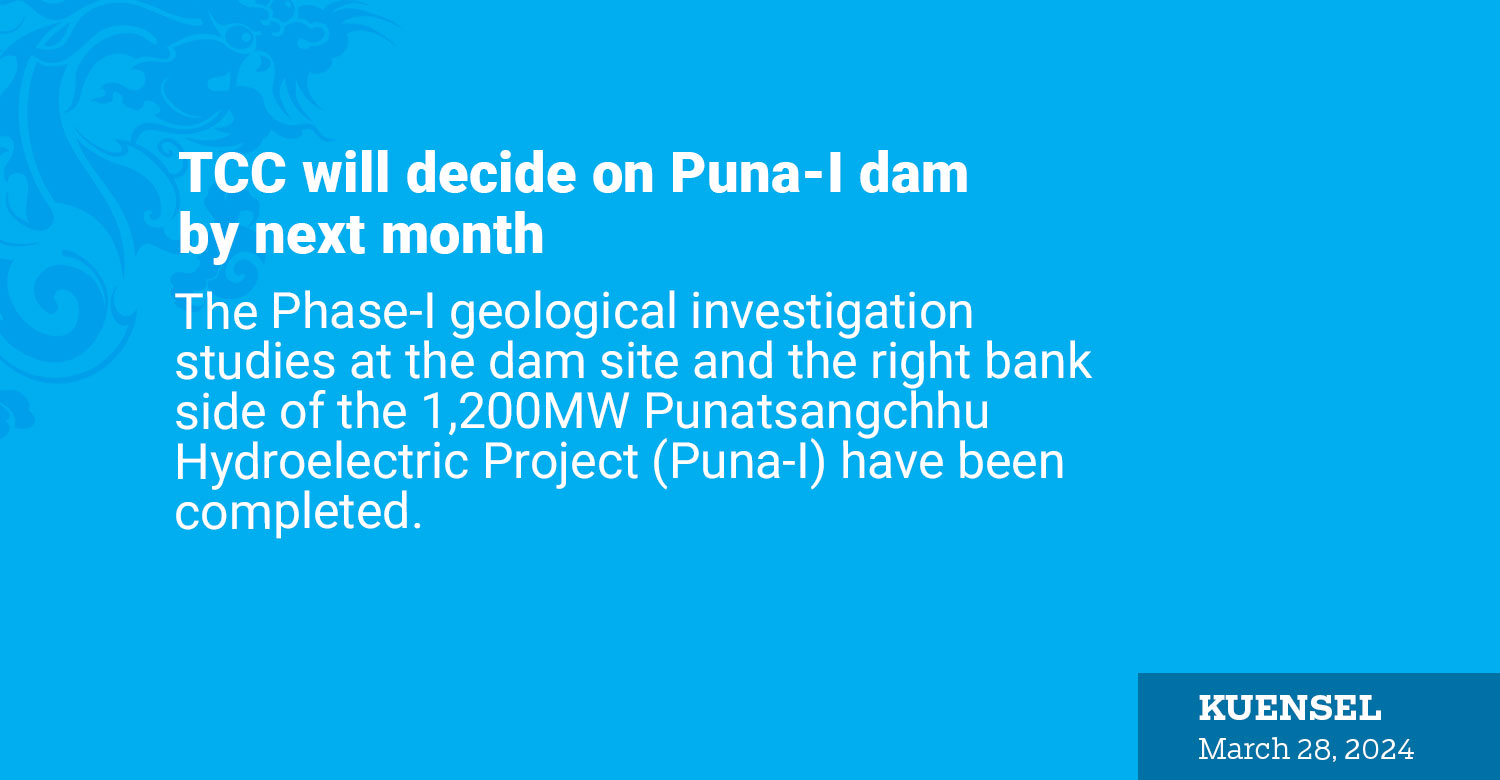Dechen Dolkar
The Phase-I geological investigation studies at the dam site and the right bank side of the 1,200MW Punatsangchhu Hydroelectric Project (Puna-I) have been completed.
These additional geological investigation as decided by the two Governments is being carried out by the project through the design and engineering consultant, WAPCOS. During the course of core drilling and core logging, the representatives/experts from RGoB, PHPA-I and WAPCOS Field Unit were stationed at the site at all times.
Phase-II is yet to commence.
The geological model must be evaluated and validated.
The Minister for Energy and Natural Resources, Gem Tshering, said that the geological studies regarding the stability of the rock have been completed. WAPCOS, an independent consultant along with the project management, conducted the geological investigation.
Lyonpo said that WAPCOS will submit a report to the The Joint Technical Coordination Committee (TCC). The joint TCC will convene to review the findings. “TCC is expected to convene and further discussions are planned next month,” Lyonpo said.
Lyonpo said that during the joint TCC meeting, the experts from the other side will need to convince their Bhutanese counterparts regarding options that ensure the implementation of all remedial measures.
Lyonpo said that the decision would be contingent upon the joint TCC.
TCC will present the final decision to the PHPA authority, which will then proceed to finalize the course of action accordingly.
TCC is expected to convene and make a decision by the first or second week of April. Following this, an authority meeting will be promptly scheduled within a day.
One of Bhutan’s foremost concerns revolves around the safety and stability of the dam. This concern is rooted in the potential downstream impacts of any dam failure on lives and properties.
The Bhutanese side emphasised the importance of building a technically secure and cost-effective dam for the success of the project.
Multiple landslides on the right bank of the dam prompted the construction of the barrage. The project encountered the first landslide in July 2013, followed by incidents in August 2016, and January 2019.
Following Indian Prime Minister Narendra Modi’s recent visit, the two governments have decided to review and finalise project-specific implementation modalities for new projects, including reservoir hydro projects.
Lyonpo said that the two ministries would collaborate to determine the most suitable modalities for implementing new hydropower projects.


